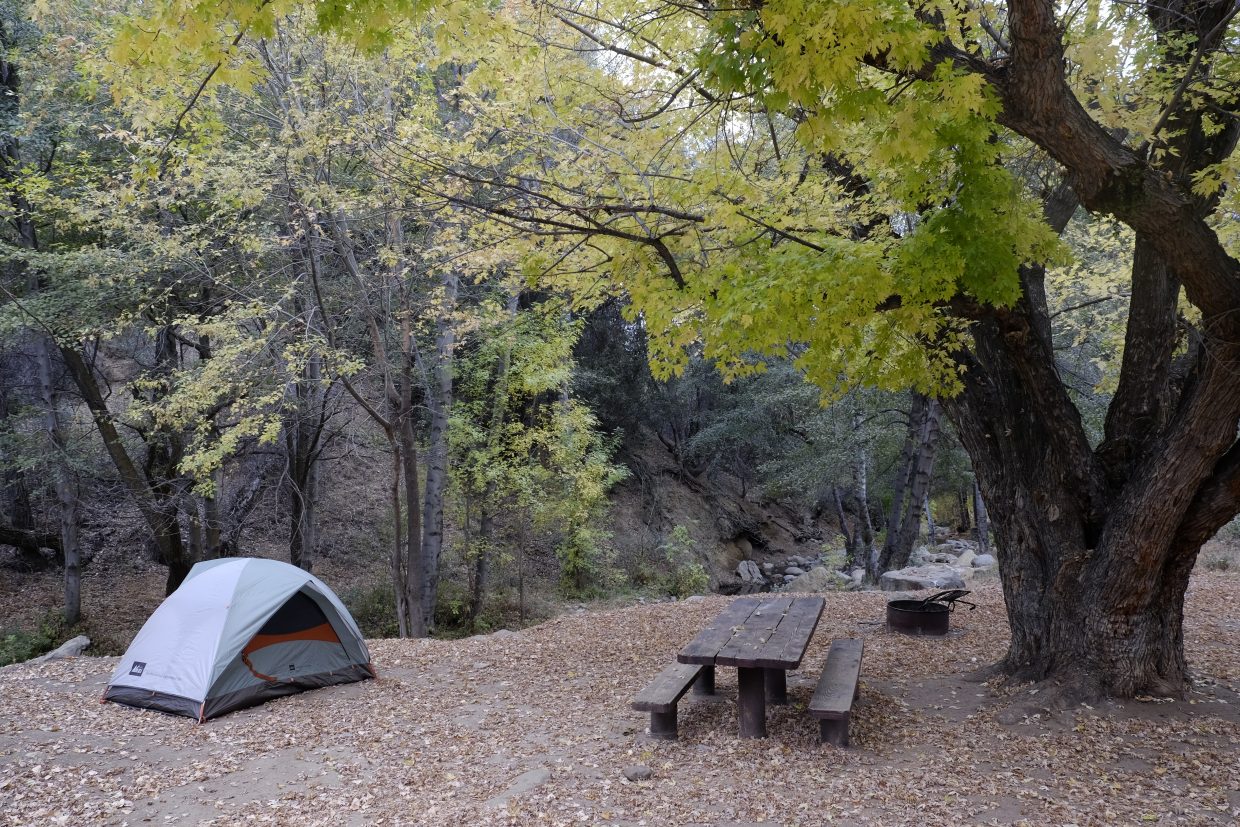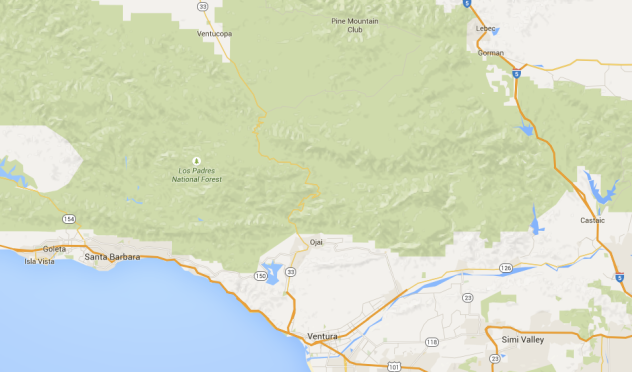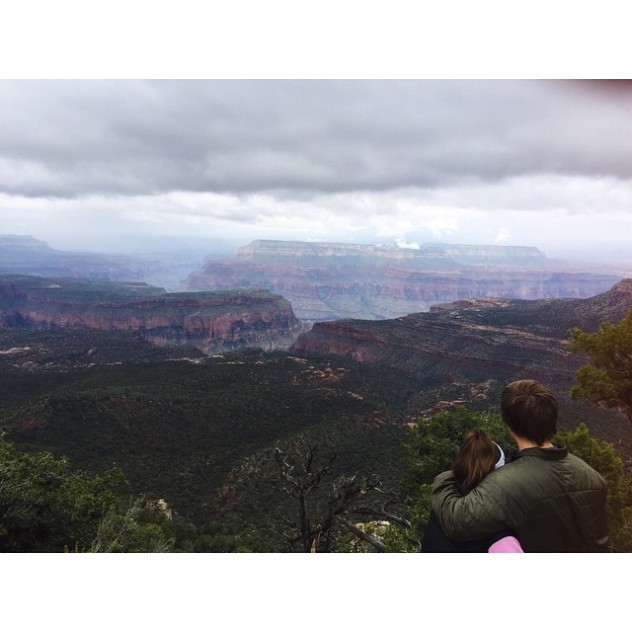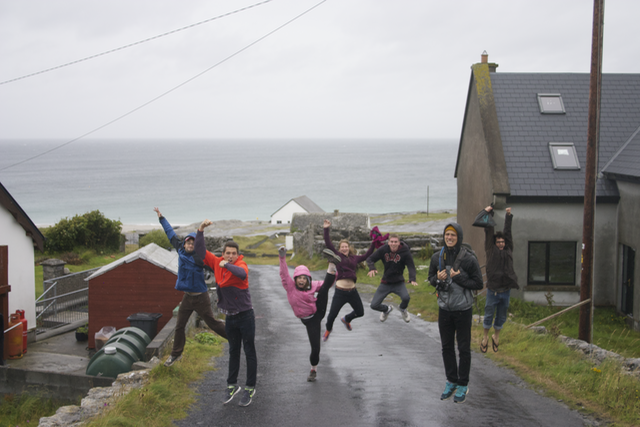If you’re like me, and not a Los Angeles native, then you might be used to that perfect weekend getaway; no people for miles, a beautiful mountain lake or stream, a perfect escape from the hustle-and-bustle of everyday life. However, as many LA-transplants come to find out, this perfect weekend getaway is easier said-than done (because 4 million of your closest friends had the same idea).
Below are some key ideas that my wife and I use whenever we want to escape the crowds. They even work on holiday weekends. This summer, in fact, we’ve camped for free on Memorial Day weekend and 4th of July weekend.
Sierra Nevadas
First of all, if you’ve got enough time to get out of Southern California, that’s the easiest way to get a nice secluded spot. You might even find a lake or stream all to yourself.

Mountain Lake that we found near Brewer Lake. We had the spot to ourselves, even on 4th of July weekend in 2014.
If you’ve got enough time to get up to the Sierra Nevadas (just East of Fresno), then you’re golden. If you don’t have quite that much time, the Kern River valley or the Sequoia National Forest are both great places to try. They’re under 4 hours from LA and offer dispersed camping on many back roads and forest service roads.
Southern California options
If you aren’t lucky enough to have lots of time, then there’s still hope for that perfect weekend of free camping in Southern California. You’ll just have to try a little harder.
Step 1 – Figure out where you want to go
There are quite a few great places to find dispersed camping within 2 hours of LA.
- Los Padres National Forest – Beautiful and often overlooked, near Ojai and Santa Barbara
- Angeles National Forest – Closest national forest to LA
- San Bernardino National Forest – Best mountains near LA, some great lakes as well
- San Jacinto wilderness – Idyllwild is a quaint little town, near Lake Hemet and Mt. San Jacinto
Each of these places has its pros and cons. However it’s possible to find free camping at each of them, it just depends on what you’re looking for.
It’s important to note a few things:
- Because you’re camping for free, you can’t expect the same amenities of more developed campgrounds. That means you’ll be very lucky to get any sort of toilet (not a huge problem for guys, but my wife isn’t the biggest fan).
- Some places are tough to get to if you don’t have a vehicle with 4×4 or AWD (ahem Subaru anybody?!?). However, don’t let that stop you because many places are definitely accessible even by sedan or RV, you just can’t be afraid of a little dust.
Step 2 – Get ahold of a map of the area
The next step is to get a map of the national forest of your choice. Here, having a smart phone is really convenient (I know, I know, there’s a first time for everything). Anyway, you can download either of these two apps:
- Maplets – It costs $3.00 up front, but once you download it the maps are free.
- PDF Maps – Free to download, but then most of the good maps cost money to add to your phone.
I personally use Maplets because it ends up being cheaper in the long run, especially if you download a lot of maps. Which I do. Because I like maps. That’s normal. Stop badgering me.
Anyway, one of the coolest aspects of these apps is that you can download tons of maps right to your phone. Many of the maps even have GPS enabled so you can tell where you are on the map even when you don’t have cell service. Pretty sweet right?!?
Step 3 – Find a spot to camp
Many of the maps actually show dispersed or primitive camping locations. These locations are ideal (especially if you’re going on a less-crowded weekend) because they typically have a few more amenities: like toilets, picnic tables, and fire rings (although, honestly, those toilets are far worse than just taking a nature-poo in my option).
However, these primitive campsites aren’t the only option. For example, in the San Bernardino National Forest, there are some amazing campsites called Yellow Post sites. These spots have been designated by the forest service as good spots to camp. They typically have a nice flat spot to pitch a tent and they have been determined to be less hazardous to have a fire (although you should always check fire-restrictions before having a fire). There are quite a few yellow post sites, and if you stop by a Ranger’s station they will give you a map indicating where they are and whether or not they are full.
We tried to camp at a yellow post site that overlooked Big Bear Lake on 4th of July weekend this year. However the spot we were hoping for was full. Did we turn around and drive home? Or course not! Instead, we drove back down the forest service road a little bit (didn’t want to encroach on the other campers’ seclusion) and pitched a tent in a nice turn out. We ended up still getting a lake-view, and we were able to see the fireworks from right by our tent! It was a great weekend!
So the moral of the story is this: find an area you want to camp in (i.e. I want to be near Big Bear to see the fireworks on the lake), drive there with plenty of daylight left to find your campsite, find a forest service road that looks seldom traveled, drive down the forest service road until you find either the spot you were hoping would be there or another pull out along the way. It’s as easy as that! Now get out there and spread the stoke!
Important!!!
Before you go camping, check out this post on camping etiquette
Remember, that when you’re camping for free, your mom isn’t there to clean up your mess. But there might be a Bear or other woodland creature nearby that would love to help you out. Make sure you do the following to avoid unwelcome guests:
- Store all your food in a secure area, don’t leave it out.
- Pack it in, pack it out. When you’re leaving make sure the spot looks untouched.
- Bring a shovel, go away from water, trails and campsites, and bury your “ungodly load.”
- Minimize campfire impacts.
- Leave what you find.
- Respect wildlife.
- Plan ahead and prepare (especially make sure to bring plenty of water).
Let us know if we missed anything. We’d be stoked to see some tips for free camping below!
As a side note: check out Total Escape for some great tips on California camping!









Amy Noel July 4, 2017
I am so glad to read this. I was searching the web for a while trying to find some good advice on dispersed camping in So-cal. THANK YOU!
Josh July 15, 2017 — Post Author
That’s great to hear! Dispersed camping is definitely the way to go. Especially with how expensive campgrounds are these days.